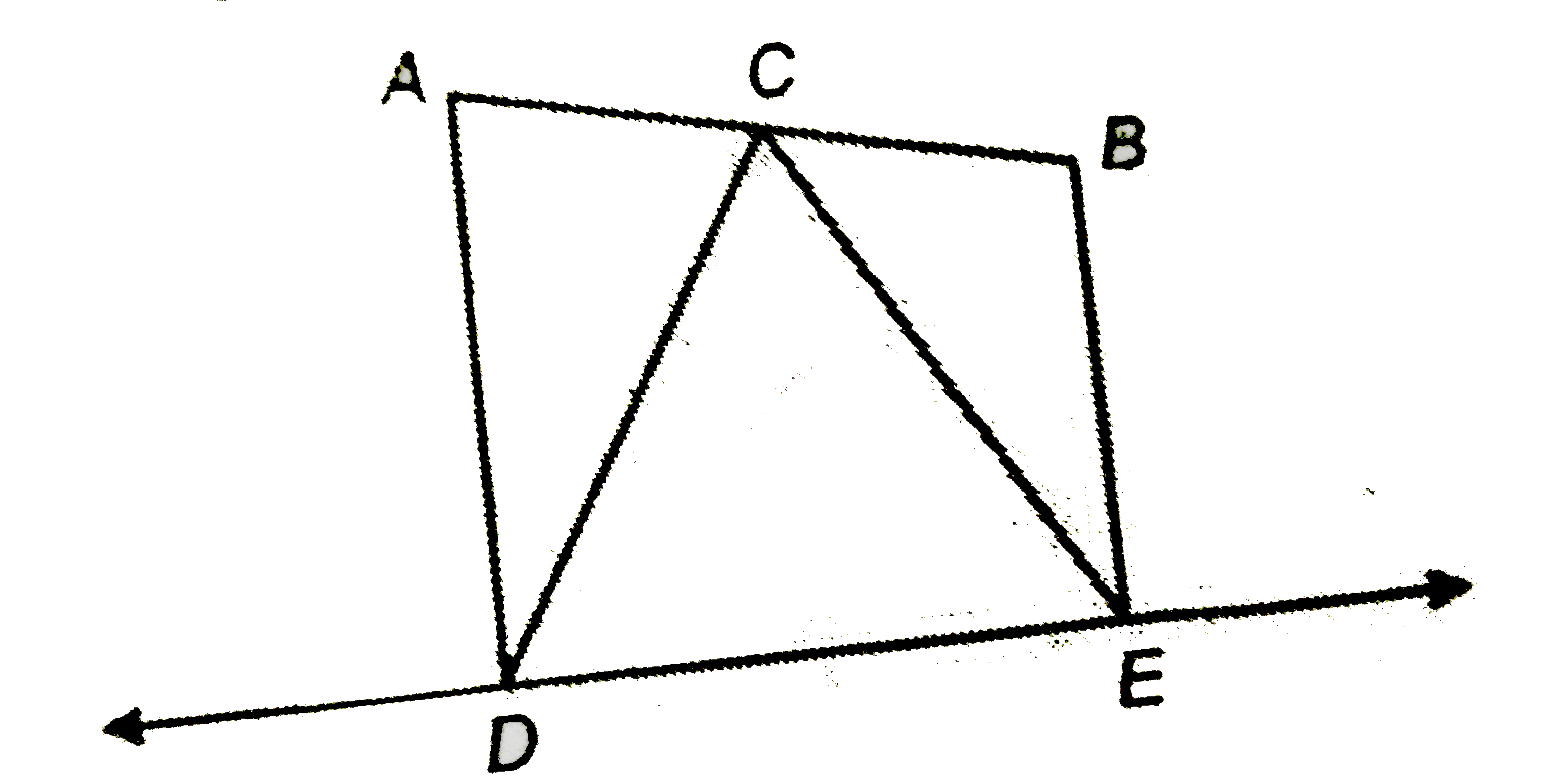In the adjoining figure , we have AC=DC and CB = CE. Show that AB=DE.

Given, AC=DC …(i)
and CB=CE …(ii)
According to Euclid's axiom , if equals are added to equals , then wholes are also equal. So . On adding Eqs. (i) and (ii), we get
AC+CB=DC+CE
AB=DE
Topper's Solved these Questions
- BOOK - NCERT EXEMPLAR ENGLISHCHAPTER - INTRODUCTION TO EUCLID GEOMETRYEXERCISE - Exercise 5.4 Long Answer Type Questions5videos
INTRODUCTION TO EUCLID GEOMETRY
- BOOK - NCERT EXEMPLAR ENGLISHCHAPTER - INTRODUCTION TO EUCLID GEOMETRYEXERCISE - Exercise 5.2 Very Short Answer Type Questions9videos
INTRODUCTION TO EUCLID GEOMETRY
- BOOK - NCERT EXEMPLAR ENGLISHCHAPTER - HERON'S FORMULAEXERCISE - Long Answer Type Questions8videos
HERON'S FORMULA
- BOOK - NCERT EXEMPLAR ENGLISHCHAPTER - LINEAR EQUATION IN TWO VARIABLESEXERCISE - Exercise 4.81videos
LINEAR EQUATION IN TWO VARIABLES
Similar Questions
In the adjoining figure, if AB = BC and BX =BY, then show that AX=CY
 View Solution
View SolutionIn the adjoining figure AB||CD, find x and y
 View Solution
View SolutionIn the adjoining figure, we have ∠1=∠3and∠2=∠4. Show that ∠A=∠C.
 View Solution
View SolutionIn the adjoining figure, we have ∠1=∠2and=∠3. Show that ∠1=∠3.
 View Solution
View SolutionIn the ajoining figure , we have∠ABC=∠ACBand∠3=∠4. Show that BD=DC.
 View Solution
View SolutionIn the adjoining figure , we have X and Y are the mid - point of AC and BC and AX = CY . Show that AC =BC.
 View Solution
View SolutionIn the given figure, we have AC⊥CD,BC⊥CD and DA=DB. Prove that : CA=CB.
 View Solution
View SolutionIn the adjoining figure, two points A and B lie on the same side of a line 'l'. C is the mid-point of AB. If AD ⊥landBE⊥l, then prove that CD = CE.
 View Solution
View SolutionIn the adjoining figure, the diagonals AC and BD of a quadrilateral ABCD intersect point O. Prove that :
AB+BC+CD+DA<2(AC+BD)
 View Solution
View SolutionIn the given figure, if x=y and AB=CB, then prove that AE=CD.
 View Solution
View Solution
